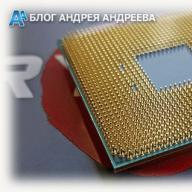Hello friends! Today's article is about Mail.Ru cloud storage. Let's look at how to use the cloud via the web interface:
How to upload files there and share links to them;
How to create folders and configure access to them;
How to move, rename and delete files.
How to create documents, spreadsheets and presentations directly in the cloud.
And other subtleties of use.
The beauty of any cloud storage is that it gives you additional space to store your files online.
No need to clutter up your computer again.
It’s convenient to share files with other people (just open access via a link).
And since I have a mailbox on Mile, I decided to use this storage as well. Moreover, 25 GB of memory is available for free here. Insert from 2018 - now they give 8 GB for free.
In general, this is all theory. And we will move on to practice.
Watch my video instructions for working with the Mail.Ru cloud below:
So, as you already understand, to gain access to the cloud on Mail.Ru you need to register a mailbox here. By doing this, you create your account through which you can use other Mail services, including cloud storage.
Although it is not necessary to register a mailbox, you can use Mail to log into your mail located on another service. I showed this in the video (watch from the 11th minute 46th second). Thus, your mailbox, for example on Yandex, will open in the Mail.ru interface and you will also be able to use the cloud.
To go to the cloud, being on the main page of Mail.Ru, you need to click on the “All projects” tab and select “Cloud”.

Initially, pictures and a video file are already loaded there, which you can delete. Delete files possibly in several ways. If you need to delete several files at once, mark them with a checkmark and click on the “Delete” button at the top.

Or right-click on the file and select “Delete”. Again, if you have marked several files, they will all be deleted.

And one nuance - in the Mail.ru cloud there is no recycle bin into which deleted files go, as on the same Yandex disk. From there we can restore them. We delete it from the cloud immediately!
To add files from your computer to the cloud, use the “Download” button in the upper left corner.

You can upload using the “Select files on your computer” button, or drag them into the upload window with the mouse. There is a limitation - the uploaded file size is up to 2 GB.

Next to the “Download” button we see the “Create” button. We use it for creating folders, documents (Word), tables (Excel) or presentations (power point) directly in the cloud.

If you want to organize your files in the cloud, then create special folders for them. To move file to folder, select it with a checkmark, right-click, select “Move”.

A window will open in which you can select a folder to move or immediately create a new one.

Generally, we can use the right mouse button for different actions on files– delete, move, copy, download, generate a link for other people or send by mail. It is very comfortable.

By the way, if you need download several files from the cloud at once. You select them with checkmarks and they will be automatically packed into one archive for downloading.
![]()


If you open access to a file for a while, and then want to delete this link, then select the desired file with the mouse, right-click and select “Delete link”.

All your files to which you have shared access can also be found in the “Sharing” section.

If a link to a file from the Mail.Ru cloud was shared with you, then you can download it immediately or save it to your cloud. You will have the option to specify a folder (where you want to save this file) or you can create a new folder for it.

Now a few words about setting up access to folders. You can share any folder with the ability to edit. That is, other users will also be able to add files to this folder.
To set up access to a folder, check the box and click on the “Set up access” tab.

Editing access can only be made available to individual members you invite via email.

If you are going to send an invitation to a user with a mailbox other than Mail.ru, then he will receive the invitation only if he logs into his mail via Mail. More about this Here.
This user will see the following invitation in their mailbox:

Having accepted it in his cloud, in the “Sharing” section, he will find the folder that you opened for him and will be able to add his files to it. You, in turn, will see all the changes he made in your folder.
I wish you success!
Sincerely, Victoria
In the computer world cloud is called a virtual environment that allows you to store and work with data via the Internet and without the participation of local storage devices. Simply put, the cloud is a collection of servers connected to the World Wide Web, where you can save your files and, in some cases, install applications. Key features of cloud storage:
- storing data on several servers at once. If one server fails, they will be accessible from others.
- availability of data from anywhere in the world. You can access your data from any computer that is connected to the Internet.
Advantages
Using the cloud is very convenient for several reasons:
1. You can access and edit the file from different devices: work laptop, home computer, tablet. At the same time, you do not need to replace old copies with new ones and think about where and what you changed, so as not to overwrite the required copy.
2. The cloud serves as a backup storage. You can store files on your computer and copies of them in the cloud. Thus, you provide excellent insurance in case of loss of information on your computer (disk failure, virus infection, laptop theft, etc.)
3. Possibility to save disk space on your computer. Nothing prevents you from dumping 15 GB into Google Drive, some more into Yandex Disk and another part into Dropbox. At the same time, you can delete files from your local storage and free up a fairly large amount of space if you urgently need it.
4. Reliability. The cloud is an infrastructure of many redundant servers. Your information is stored on multiple sites at once and the risk of data loss in Google Drive or OneDrive is much lower than if stored on a computer.
The word "cloud" has long ceased to be used in its original single meaning. Today, cloud services are firmly rooted in our digital lives and allow us to comfortably use files and documents without fear for their safety. Among domestic services of this type, the mail ru cloud stands out - a simple and convenient way to organize your data.
What does mail.ru offer?
You will get 8 GB of space for uploading files and convenient synchronization between different devices.
If 8 GB is not enough for you, then the free storage space can be expanded by purchasing additional gigabytes. On mobile plans for Android and iOS, an increase of up to 1 TB is available, and on PC, for the web version - up to 4 TB. According to company statistics, most users have more than enough free gigs. It makes sense to buy a larger cloud for corporate clients to use the service together with colleagues.
There are three options for using the cloud service:
- Directly, through the web interface on the official website of Cloud Mail.ru, if you are used to using the computer version for the desktop.

- Download the program to your gadget if you plan to work with the cloud via a mobile device. You can easily find download links on the official website:

- By downloading a special program: “Disk-O” to synchronize files from the cloud with your computer. The program allows you to connect synchronization not only with the mail.ru cloud, but also with other popular cloud services. Such as Dropbox, Google Drive. But, since the development of the Disk-O service has not yet been completed, in my opinion it is still too early to use it.
Of all the listed ways to use the service, in my opinion, the simplest and most reliable is working through the interface of the Cloud Mail.ru service.
How to use the capabilities of Cloud.Mail.Ru
To receive free 8 GB you just need to register a mailbox on Mail.Ru. Directly from the mail interface, go to the Mail.ru Cloud service and use all the capabilities of the cloud service.

So, you have the cloud program installed on your smartphone or you are logged in through the web interface using a browser. Now available to you:
All files uploaded to the cloud will become available on any of your devices, where you only log in to Mail.
How to use the MailRu cloud? In fact, everything is very simple. Using the web interface as an example:
- “Download” button - saving files from the device to the cloud.

You can upload files to the cloud by simply dragging and dropping
- “Create” button with a drop-down list - creating folders, documents, tables and presentations.

In the Mail.ru cloud you can create and edit text documents and Excel tables
- “Download” - this button answers the question of how to download a file from the mail ru cloud: select it with a checkmark and click it.

- “Delete” - deletes the selected data.

Removing marked files from the mail ru cloud
- “Get link” - getting a URL to download a file.

- “Set up access” is an option for collaboration. Allows Mail.Ru users you invite to edit files in your storage or create new documents in a public folder.
To use access settings, you need to select the folder to which you want to provide access and click “Configure access”.

Then, in the window that opens, configure access settings.

In this example, settings have been made for collaboration in the Mail.ru cloud
These are the basic capabilities of the web interface; they are duplicated in applications for computers, tablets and smartphones, which also have their own “tricks”.
Cloud on a smartphone
The mobile application has a number of advantages. For example, you don’t need to upload photos from your phone’s memory to the Android version of the storage after taking them: just click on the blue plus button “Add” in the program.


On smartphones running Android, it is possible to enable automatic downloading of photos and videos taken with the phone’s camera.

On an iPhone, you can use the autoload option from the application settings for the same purpose. If it is enabled, photos will be automatically uploaded to the cloud, freeing up phone memory. The “Autoload video” option works similarly.
To enable auto-upload of photos on your iPhone, you need to do the following:
- Go to settings by clicking on the corresponding icon in the upper left corner.

- Then go to the startup settings menu and turn it on.

Please note that to save mobile traffic, the “Wi-Fi only” switches must be turned on.

Advantages of the program
The main advantage is access to the file from any location or device with Internet access, plus reliable data safety in the event of a breakdown of the gadget synchronized with the cloud. Besides:
- easy data transfer between multiple devices - you can forget about wires and Bluetooth;
- the ability to share files and edit them, which can greatly facilitate the work on the project;
- viewing files without having to download them;
- mail.ru storage can be used instead of a memory card for photos and videos from a smartphone.
Some disadvantages
But there are also disadvantages. For example, with the free plan you won’t be able to upload large files to the cloud - the maximum size is 2 GB. The disadvantages include, by modern standards, the scanty amount of free storage. Total 8 GB.
How to remove the mail ru cloud from your computer
If you no longer need the application, how to remove the cloud from your computer? Same as other programs, but with one note - the folder previously synced with the storage will remain and must be deleted manually. In general, the Mail.Ru cloud is a simple and convenient service that will help simplify working with files on many devices for free.
The book was made from wonderful photos. The girl’s mother sent me the entire photo archive using the Mail.Ru Cloud service. It is very comfortable! And there is no need to waste time on preliminary meetings. And, living in another city, making an order this way becomes easier than ever.
Perhaps you also have photos from the photo shoot. They need to be put into a photo book!
- Send me a photo by email
- It doesn’t matter what city in Russia you live in
- The finished layout will be agreed with you step by step
- The printed book is sent to you directly from the printing house
- Payment is made by transferring the agreed amount to my individual entrepreneur account
- I will definitely send all documents (invoice and certificate of work completed) upon completion of the work
As you can see, everything is simple!
And now a little instruction for those who don’t know how to send photos via file sharing. After all, it won’t be possible to load them into a letter, or even several (the “weight” of the photo is quite large, because to create a book you have to work with the originals). Only then will your photos remain sharp in the book.
How to send photos via Cloud Mail.Ru cloud service
- Moving to cloud storage https://cloud.mail.ru/home/
- Click the “Create” button in the upper left corner, then “Folder”
- Give our folder a name (I'll leave it as "New Folder")

- Our new folder appears in the left column. It doesn't have content yet.

- Click "Upload" and "Select files". We select the necessary photos on the computer.
We all use cloud storage, and some of us even pay a subscription fee to store files beyond our allotted limit. This is convenient - if we have the Internet, we can access all the files that we have copied to the cloud at any time. But such services also have disadvantages: they can be hacked by hackers, files can get to strangers, and if the cloud owners are not satisfied with the content you store with them, your account can be blocked, and then all the files will be lost. Creating your own cloud is a great solution, although it has its drawbacks.
Advantages of a personal cloud:
No limits. You can store as many files as fit on the drives on your computer.
- No fees, everything is free (except electricity).
- Complete privacy. Files are copied from your computer to other devices without using a third-party server.
- Ability to share an unlimited number of folders and files with other users.
- Manage access levels to files and folders.
Disadvantages of a personal cloud:
You will have to keep the computer turned on all the time, otherwise remote access to files will be lost.
- It will not be possible to connect your cloud to most applications that work with popular storages.
- The risk of losing files due to a computer failure.
How to create your own cloud:
1. Go to the website and create an account.

2. Download the Tonido Server program. Install it, run it and allow it access to the network (if the firewall dialog box pops up). This program creates a server from a computer, so that files stored on it can be accessed from anywhere in the world via the Internet.
3. The Tonido Server icon hangs in the notification panel. By clicking on it, the browser opens the local address http://127.0.0.1:10001 with a service interface where you can specify which folders will be added to the cloud.

4. Download the Tonido mobile or desktop app. Launch it and log into your account. If you see files in the application that are stored on your computer, then the cloud is ready and you can use it. Now you will always have all the files you need with you.

The app can open several types of files, including videos, music and texts. Any file can be downloaded to your device or sent to a friend (by email or with direct access via a link in the Tonido service).

Strictly speaking, a server running on a home computer cannot be considered a full-fledged cloud service. The cloud is a professional solution that uses the technology of distributing files across several servers, making the risk of their loss almost eliminated. The likelihood of data corruption can be minimized at home - for this, for example, you can create a RAID array. But even in this case, other risks remain, such as physical damage to the computer or its theft. It's harder to protect yourself from this.




